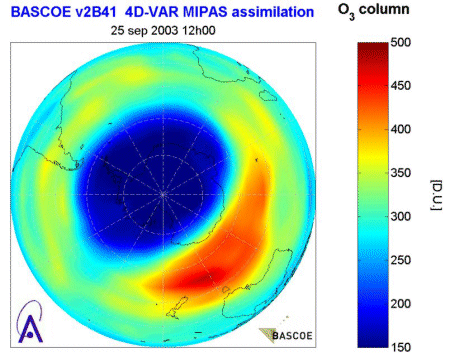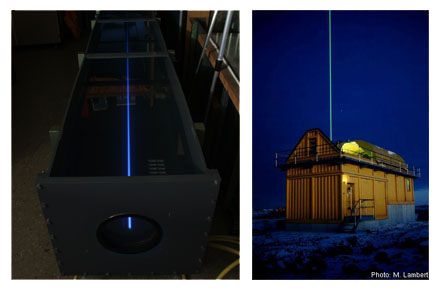1. Lidar
How does a lidar work? (2/2)
As shown on the animation on the previous page, the laser light ist not only reflected by surfaces (such as the water surface, for example), but water molecules and suspended particles also produce a signal by light scattering. Therefore, data can be obtained by making use of the phenomena of reflection and scattering.
Besides reflection and scattering, we may also make use of the fact that certain substances in the atmosphere and in the oceans absorb light. This leads to a reduction in both the intensity of the laser light and the intensity of the reflected or scattered light. Such signals are not easy to analyse because they could also occur when the amount of light-scattering substances is reduced. A much simpler method is using two lasers having two different wavelengths: with a proper choice of wavelengths, absorption can occur in one wavelength and none in the other. As a result, the intensities of the scattered light are also different. This difference can then account for the amount of light-absorbing substances present. This method is known as Differential Optical Absorption Lidar (DOAS), because it makes use of the absorption of substances at different wavelenghts. This method can be used to measure the ozone concentration in the atmosphere, for instance.

Source: ESA
But that's not all! One other method makes use of fluorescence as signal source. Many substances are fluorescent, which means they are capable of emitting light after having been excited by absorbed light. Fluorescent light has a larger wavelength than the absorbed light. The mostly very weak fluorescent light can be detected without being distorted by the more intense laser light when using optical filters for laser light suppression.
In the picture below (left), fluorescent light is produced by a laser which illuminates the water in a tank with 355 nm wavelength (near ultraviolet, invisible to the naked eye). The tank contains tap water with traces of organic substances that fluoresce with blue light.
The picture below right shows a monitoring station taking atmospheric measurements of air temperature and wind with a lidar.

Right image, source: Australian Antarctic Division
